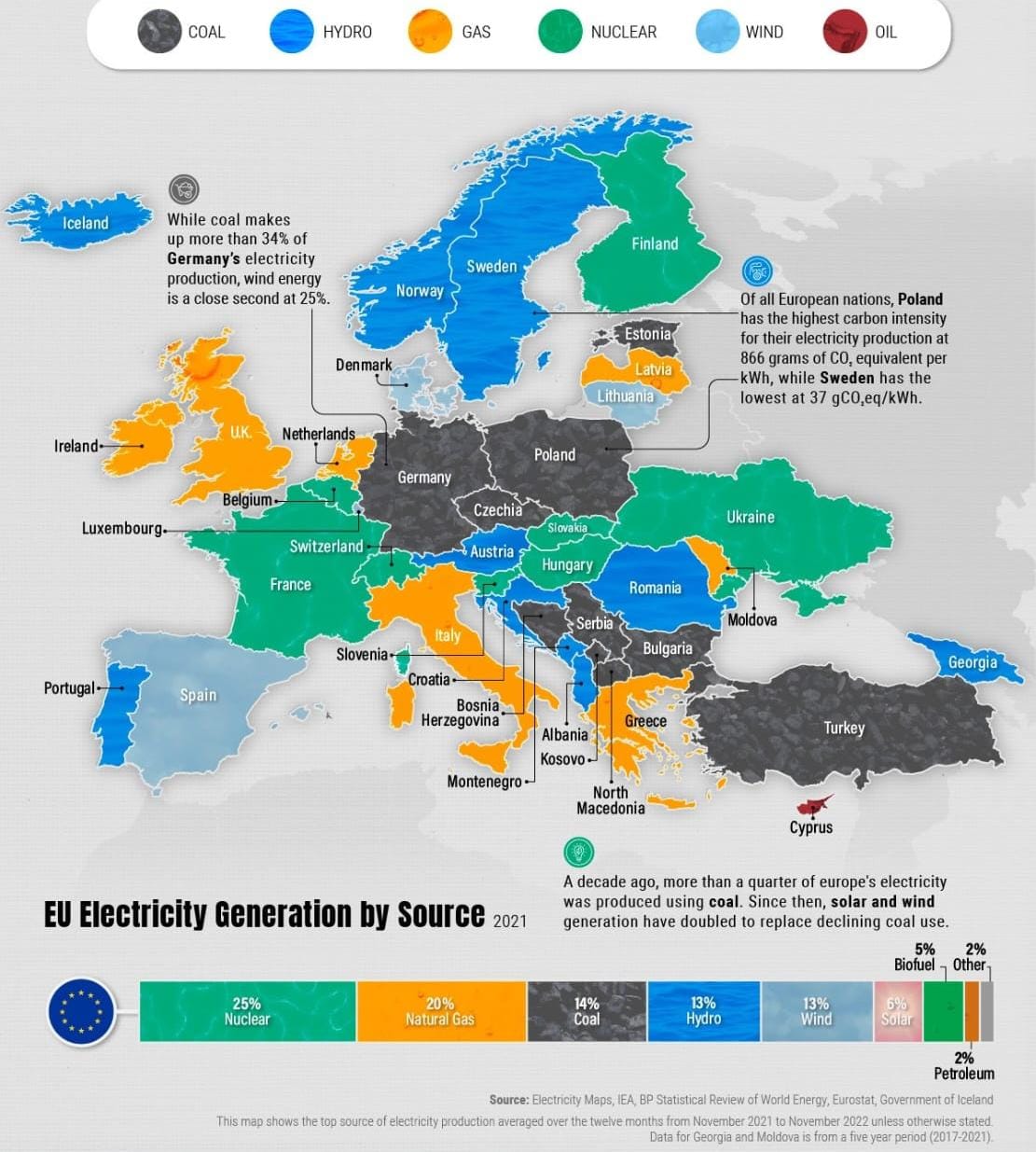Since last year, practically every country in Europe has come to depend on reliable energy and electrical supplies. As the continent moves away from its reliance on Russian fuel imports.
Although several nations have made strides in their energy transition away from fossil fuels, nearly half of European nations. They still rely on them as their main means of producing electricity.
Using information from Electricity Maps and the IEA, together with a breakdown of the EU’s overall power generation by source in 202. Over the past ten years, Europe has made significant progress in its transition to the production of power from renewable sources.
Oil, natural gas, and coal accounted for 49% of the EU’s electricity output in 2011, compared to only 18% from renewable sources. Ten years later, renewable energy sources are almost on par with fossil fuels. However, counting for 32% of the EU’s electricity generation in 2021 compared to 36% from fossil fuels.
The main forces behind this transition to renewable energy have been the growth of wind and solar generation. Hence this will account for 19% of the EU’s electricity in 2021 from only 8% in 2011. As compared to other regions of the world, the EU’s share of wind and solar electricity generation is tied for first with Oceania. Despite the fact that it may still seem small.
The most prevalent primary form of electricity generation in Europe is hydropower, which, despite having a smaller percentage than other sources, is a key source of renewable energy.
Notwithstanding its decline over the past few decades, nuclear energy remains the largest single source of electricity generation in the EU and throughout Europe. In 2001, nuclear energy accounted for one-third (33%) of the EU’s electrical generation. Whereas during the next 20 years, that percentage decreased to 25%.
When examining individual countries, the bulk of the biggest nations in Europe use fossil fuels as their main source of electricity.
Germany continues to rely significantly on coal, which produced 31% of the country’s electricity from 2017 to 2021. Notwithstanding the country’s reliance on the fossil fuel with the highest carbon content, wind. Moreover, solar energy combined accounted for 33% of Germany’s electricity production (23% for wind and 10% for solar).
The nuclear industry accounts for more than half of France’s electricity generation, making it the largest nuclear-dependent economy in Europe.
Between 2017 and 2021, natural gas will be the main fuel for electricity generation in Italy, the UK, and the Netherlands. With 42% of its electricity coming from natural gas, Italy is the most dependent of the three. Although the Netherlands (40%), the UK (38%), and other countries aren’t far behind.
The success of Spain’s shift to renewable energy sources sets it apart from other significant European countries. While the country relied heavily on natural gas from 2017 to 2021 (29%), in 2022 wind overtook natural gas to become the main source of power. Accounting for 32% of total electricity production.
Energy independence in the EU has increased in importance as a result of Russia’s invasion of Ukraine. The nations have seized the chance to quicken the switch to renewable energy sources.
In 2022, the transition advanced significantly, according to a new report from Ember, and for the first time ever. Solar and wind power (22%) surpassed natural gas (20%) in the production of electricity.
While the EU’s production of power from fossil fuels increased in 2022, Ember anticipates a 20% reduction in that same production in 2023. This map of the main energy sources for power generation may soon include a lot more renewable and low-carbon energy sources. If the EU can maintain this accelerated shift away from fossil fuels.
















